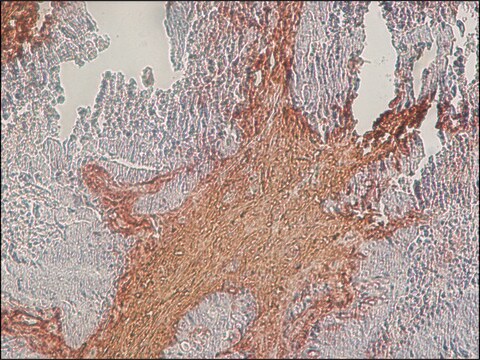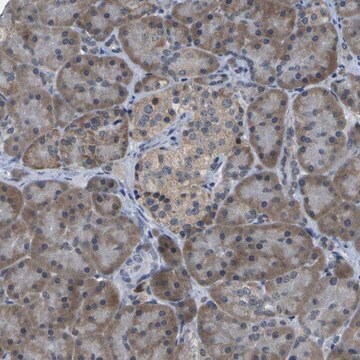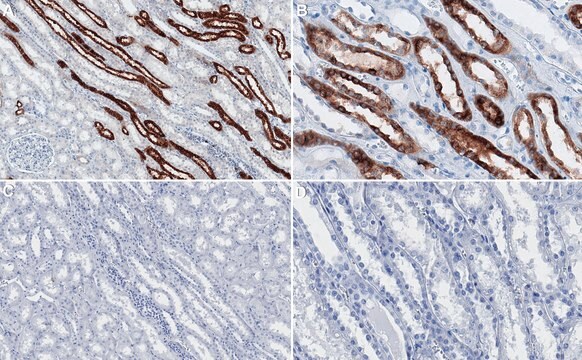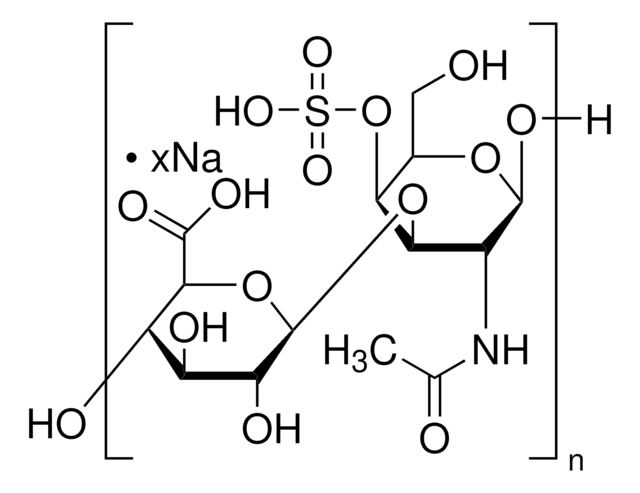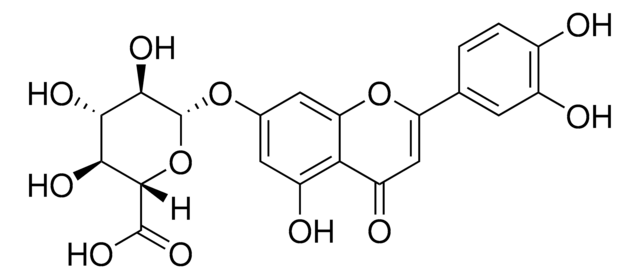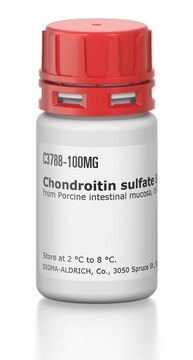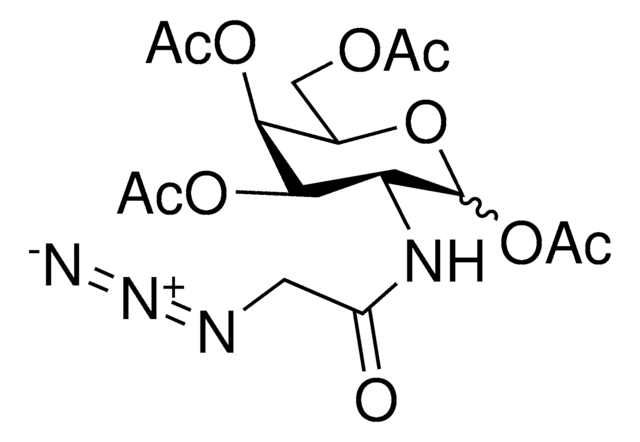MABT1324
Anti-Keratan sulfate Antibody, clone 373E1
Sinônimo(s):
KS, Keratosulfate
About This Item
Produtos recomendados
fonte biológica
mouse
Nível de qualidade
forma do anticorpo
purified antibody
tipo de produto de anticorpo
primary antibodies
clone
373E1, monoclonal
peso molecular
observed mol wt ~N/A kDa
purificado por
affinity chromatography
reatividade de espécies
chicken, human
reatividade da espécie (prevista por homologia)
vertebrates
embalagem
antibody small pack of 100
técnica(s)
ELISA: suitable
immunohistochemistry: suitable
immunoprecipitation (IP): suitable
western blot: suitable
Isotipo
IgMκ
nº de adesão de ID de proteína
nº de adesão UniProt
temperatura de armazenamento
-10 to -25°C
Especificidade
Imunogênio
Aplicação
Evaluated by Immunohistochemistry (Paraffin) in Human cartilage tissue sections.
Immunohistochemistry (Paraffin) Analysis: A 1:50 dilution of this antibody detected Keratan Sulfate in human cartilage tissue sections.
Tested Applications
Western Blotting Analysis: A representative lot detected Keratan Sulfate in Western Blotting application (Magro, G., et al. (2003). Am J Pathol. 163(1):183-96).
Immunoprecipitation Analysis: A representative lot immunoprecipitated Keratan Sulfate in Immunoprecipitation application (Magro, G., et al. (2003). Am J Pathol. 163(1):183-96).
Immunohistochemistry Applications: A representative lot detected Keratan Sulfate in Immunohistochemistry application (Magro, G., et al. (2003). Am J Pathol. 163(1):183-96).
ELISA Analysis: A representative lot detected Keratan Sulfate in ELISA application (Magro, G., et al. (2003). Am J Pathol. 163(1):183-96).
Note: Actual optimal working dilutions must be determined by end user as specimens, and experimental conditions may vary with the end user.
Descrição-alvo
forma física
Reconstituição
Armazenamento e estabilidade
Outras notas
Exoneração de responsabilidade
Não está encontrando o produto certo?
Experimente o nosso Ferramenta de seleção de produtos.
Código de classe de armazenamento
12 - Non Combustible Liquids
Classe de risco de água (WGK)
WGK 2
Ponto de fulgor (°F)
Not applicable
Ponto de fulgor (°C)
Not applicable
Certificados de análise (COA)
Busque Certificados de análise (COA) digitando o Número do Lote do produto. Os números de lote e remessa podem ser encontrados no rótulo de um produto após a palavra “Lot” ou “Batch”.
Já possui este produto?
Encontre a documentação dos produtos que você adquiriu recentemente na biblioteca de documentos.
Nossa equipe de cientistas tem experiência em todas as áreas de pesquisa, incluindo Life Sciences, ciência de materiais, síntese química, cromatografia, química analítica e muitas outras.
Entre em contato com a assistência técnica